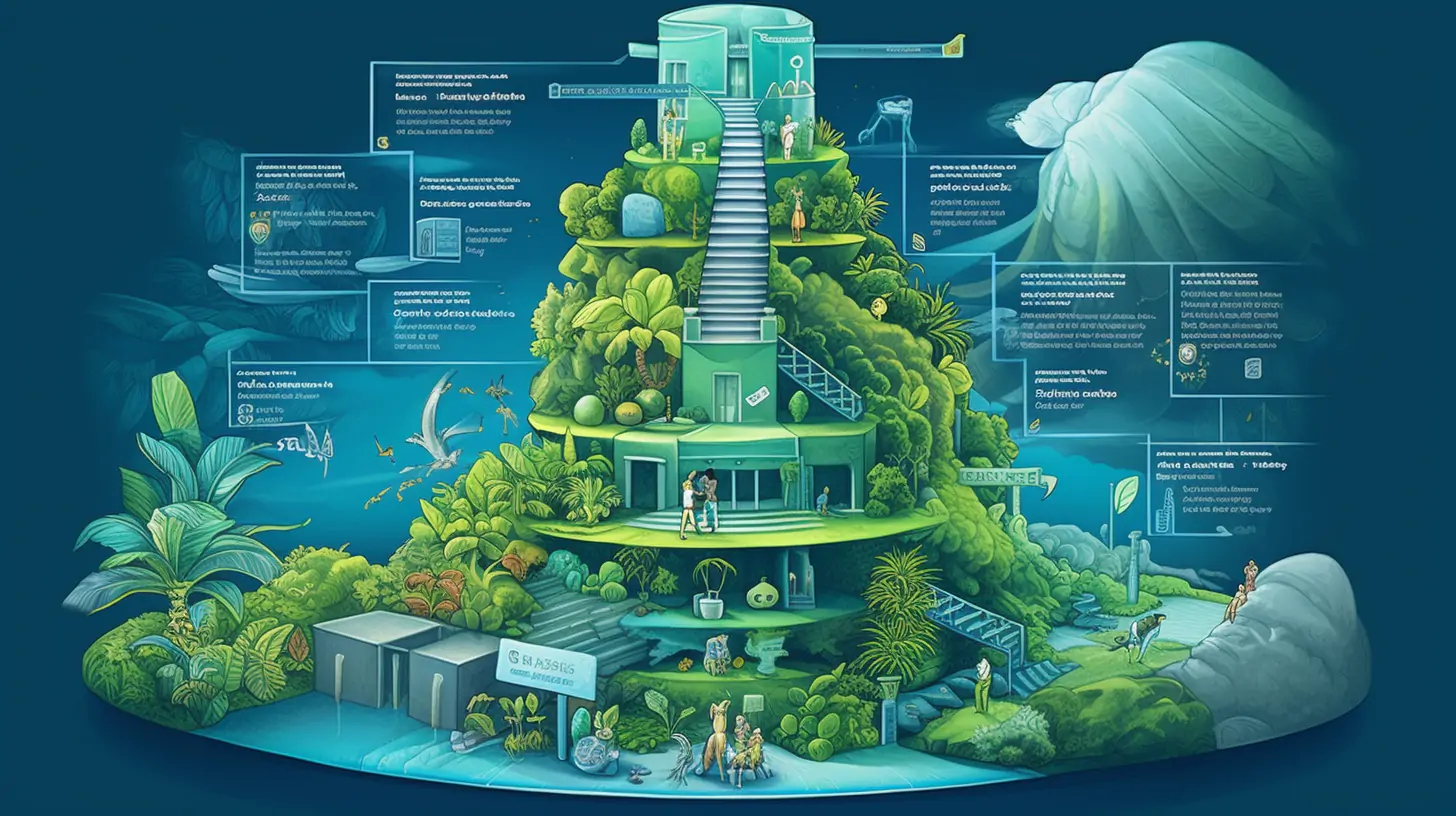Interesting statistics
Project Life Cycle - a sequence of project phases set based on project management needs. The life cycle project management process typically includes four key steps: project initiation, project planning, project execution, and project closure.
Initiation as a project phase is the first phase in the project lifecycle management cycle. Initiation involves starting a new project.
Starting a new project requires defining its purpose, scope of work, and results. The project team is recruited, the project office is set up, and the project concept is formed. This is necessary to get approval and start the next stage.

In general, there are six key steps to take to initiate a new project properly:
business case development;
development of a feasibility study;
creating a project charter;
appointment of the project team;
project office setup;
phase review (assessment and verification of planning results).
Initiation as a phase of the project is the most critical stage in the life cycle since this is when the team is formed, on which the implementation of the project as a whole will depend in the future.
Planning in project management is creating a project management model in the complex. Planning should be carried out taking into account the possibility of operating the following procedures:
evaluation of performance, considering the analysis of deviations in terms and costs using trends in the design process development.
confirmation of the objectives associated with the evaluation of the adopted design phase.
proposals on the methodology of qualitative analysis based on static methods.
analysis of resources, based on which decisions are made on the need to adjust the work plan and apply corrective actions to eliminate or reduce the undesirable consequences of deviations that have arisen.
Setting up a project baseline should provide an estimate of the project objectives and resource requirements.
The last step in project development is to bring the results of the various stages of development to a final result, or, in other words, a report. The final report must contain all the necessary information about the project. The report should be written so the reader can easily recreate the project in his head.
The report must contain at least the following sections:
annotation;
introduction (summary of the project);
design;
project implementation and data summary;
data analysis and output;
results and discussion;
links.
A summary is a one-page summary of your project that covers the critical design issues and the most crucial project parameters. The resume is an informational advertisement for the project. The report must be accurate and clearly explain all essential details.
It is equally essential that the report be readable and understandable to those not involved in the project. It is always a good idea to include a lot of visual aids, such as graphs generated using the appropriate software, to showcase the results of a project better.
Project management practices related to the implementation phase of a project include:
implementation of the preliminary project plan. The task of the project manager is to initiate the implementation of project activities, acquire and control the allocation of resources, recruit and train new team members, maintain the project schedule, and ensure the quality of the project results;
monitoring project progress against the project baseline.
risk identification and assessment. Risk planning includes processes related to the identification and analysis of risks (delays in the development of documentation, excess of the cost of design work, etc.) and the development of planned measures to maximize the positive and minimize the negative consequences of the occurrence of risk events;
creation of a preliminary budget. The budget should summarize the planned
costs and revenues associated with the project;
development of a work report. This document will list the work to be carried out and the project's expected results.
Basic requirements for the project implementation management system in the context of changes:
managing changes to the project baseline. A complete record of all project events must be kept. The project workbook is the primary source of information for all project reports;
obtaining operational information about the status of the project. This means that the entire project team should share the entire project plan, and any changes to the plan should be communicated to all stakeholders so that each project responsibility center is kept informed of how the plan is progressing;
focus on the client. It is necessary to build a high-performance project team. In the work process, it is essential to consider the functional boundaries in the activities of the project team.
Project management practices related to project closure include:
project closure;
conducting reviews of subprojects in the project structure;
closing a contract with a client.
In waterfall modeling, project work moves linearly through a series of phases, such as:
requirements analysis (environment research);
design;
development and implementation of subprojects;
verification of subprojects;
review of the project as a whole.
The disadvantages of this approach are the accumulation of errors possible in the early stages by the end of the project and, as a result, an increase in the risk of project failure and the project cost.
Using project management technologies by life cycle stages minimizes the risks of disrupting routine business operations by providing analytical and information support adapted to a single team, technology, and resources necessary for project implementation. The required skills depend on each project and the resources available under the given conditions.
The more changes occur during the project implementation, the more adjustments the parent organization must make to achieve the project's goals, and the higher the risk of project failure. The main difficulty that changes in project implementation entails is that the form of management at each stage will be unique and change throughout the project.
An iterative approach (eng. iteration - repetition) - the execution of work in parallel with the continuous analysis of the results obtained and the adjustment of the previous stages of work. The project with this approach in each development phase goes through a repeating cycle: Planning - Implementation - Check - Evaluation (eng. plan-do-check-act cycle).
Benefits of an iterative approach:
reducing the impact of severe risks in the early stages of the project, which leads to minimizing the cost of their elimination;
organization of effective feedback of the project team with the consumer (as well as customers and stakeholders) and the creation of a product that meets his needs;
focus on the most critical areas of the project;
continuous iterative testing to evaluate the success of the entire project as a whole;
early detection of conflicts between requirements, models, and project implementation;
more uniform loading of project participants;
effective use of accumulated experience;
an accurate assessment of the project's current state and, as a result, greater confidence of customers and direct participants in its successful completion.
Thus, deciding how to manage the project is necessary at the planning stage. This decision should be based on the complexity of the work and the team's experience. The choice of management methods will depend on the maturity level of the project, the organization, the number of projects, the complexity of the projects, and the duration of the projects.
Project Quality Management
Project quality management is the process by which quality is controlled and maintained throughout the project. Although the context may imply that "quality" means "perfection", in this case, it is usually more about ensuring consistency of quality throughout the project. However, what is meant by "quality" depends on what the customer or stakeholder requires from the project and, therefore, may differ for each project.
The main goal in project quality management is to ensure the project meets the needs for which it was initially created - no more, no less. Quality management in a project is a multifaceted activity that requires the constant attention of managers and the responsibility of performers. Quality deviations can have the most critical consequences for a project.
Modern quality management and project management complement each other. Both concepts emphasize customer satisfaction and the core belief that quality leads to customer satisfaction. The main goal in project quality management is to ensure the project meets the needs for which it was initially created - no more, no less.
In other words, to ensure quality, project implementers must meet the needs of stakeholders. However, meeting or exceeding requirements is not part of project quality management.
According to the Project Management Body of Knowledge Guide (PMBOK Guide), quality is "the extent to which a set of inherent characteristics satisfies requirements".
The project manager and the project management team are responsible for balancing quality and grade (the category or rank given to products or services with the same functional use but different technical characteristics). This responsibility ensures that quality expectations are met.
At the beginning of the project, quality requirements are defined and agreed upon with the stakeholders. These requirements become the basis of the project work. After that, the project manager's job is to ensure the work is done without exceeding the given requirements, as this will lead to resource overruns. Quality is not about giving the customer extra service or doing extra work.
Project quality management consists of three main processes:
quality management planning includes defining quality requirements and standards for the project and product. The goal of project quality management should be communicated to all stakeholders, and the corresponding tasks should be delegated to responsible persons.
quality assurance involves auditing quality requirements and quality control results to ensure appropriate quality standards are used. When standards are not being met, or goals are not met, the necessary steps and corrective actions must be taken to address these issues.
quality control - includes monitoring and recording the results of quality assurance activities to evaluate performance and recommend necessary changes.
Project quality standards should be detailed and listed. The International Organization for Standardization (ISO) is a worldwide federation of national standards bodies from more than 145 countries, each representing one body. ISO is a non-governmental organization founded in 1947 and based in Geneva, Switzerland. Within the framework of ISO, there are more than 180 specialized technical committees, about 650 subcommittees, and 2840 specialized groups. The work of this organization is based on close cooperation with other international organizations.
To understand how design organizations provide such an essential parameter of their activities as the maintenance and development of quality, it is necessary to determine what a quality management system or a quality management system is. If a management system is a framework of processes and procedures used to carry out all the tasks necessary to achieve its objectives”, then, going back to ISO 9000, one can find the definition of “a management system for directing and controlling an organization about quality”. A quality management system (QMS) is “a set of interrelated or interacting processes used to guide [a project] to ensure that products meet specified requirements.
The quality management system (QMS) is the essential quality process architecture on which the entire project management model rests. A quality management system is designed to direct and control [of a project] concerning quality. Summarizing various definitions, we can say that the QMS is a system created for the continuous formation of a policy and goals in the field of project quality and for the achievement of related goals.
In addition to defining project quality standards, there are several other aspects of quality management, in particular:
development of a strategy for compliance with standards (quality assurance);
measurement quality (quality control).
Each of these items should be discussed in the section on the quality of the project management plan. Quality control results should be actively documented throughout the project, and changes in strategy should be updated as part of the project management plan.
Thus, quality management in a project is a multifaceted activity that requires managers' constant attention and the performers' responsibility. Quality deviations can have the most critical consequences for a project.




